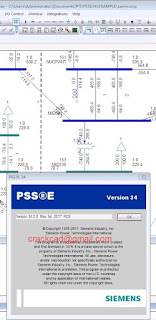PSS®E is a trusted leader in the power industry for electric transmission system analysis and planning. Used by transmission planners, operations planners, consultants, and others in over 115 countries worldwide, PSS®E is powerful, customizable, and fully-featured. With the addition of integrated node-breaker support in version 34, PSS®E continues to lead the market in advances in electric transmission modeling and simulation software.
In addition to the base PSS®E software package, there is a rich ecosystem of optional add-on modules that provide extended capabilities to PSS®E users. See the “Add-On Modules” Tab for more information. ***Siemens PTI has recently invested heavily in the development of many new add-on modules, and we have even more coming out soon, so be sure to check the “Add-On Modules” Tab regularly!***
The PSS®E base package includes:
- Fast and robust power flow solution for network models up to 200,000 buses
- Lightning-fast steady-state contingency analysis, including automatic corrective actions and remedial action scheme modeling
- Full node-breaker support for detailed modeling of substation topology
- Automated PV/QV analysis with plot generation
- Powerful program automation and customization with full-featured Python® API
- Balanced and unbalanced fault analysis, contingency analysis (deterministic and probabilistic)
- Modern graphical user interface
- Comprehensive power flow and dynamics model library including emerging technologies such as advanced FACTS devices and wind turbines
- Code-based, user-written model building
- Powerful, easy-to-use integrated plot facility
- Graphical construction of user-defined controller models
Now available in PSS®E 34.2:
- Automatic importing of background images in diagrams from mapping service providers
- Node-breaker modeling now fully supported in short circuit and OPF calculations
- Calculation of thermal impacts and DC resistance conversion factors in GIC calculations
- Better initialization for dynamic simulations with improved messaging
- Revised composite load model
- New governor models support specification of asymmetrical dead-band in speed signal
- GE vendor specific wind models are supplied as part of the standard installation
 Software training,tutorials,download,torrent
Software training,tutorials,download,torrent